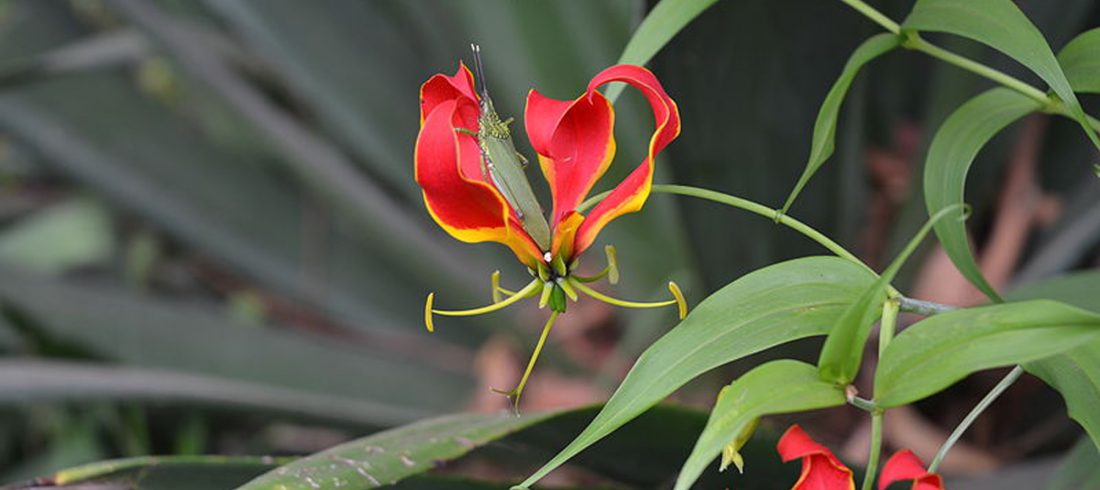
If you in between your wildlife adventures like to have a change of scenery, then Kitulo is indeed a rare botanical marvel, home to a full 350 species of vascular plants, including 45 varieties of terrestrial orchid, which erupt into a riotous wildflower display of breathtaking scale and diversity during the main rainy season of late November to April.
If you come here you find is a hiker’s and nature lovers paradise, but the place would appeal to anyone who wants to get away from the beaten tracks and experience remote mountain life with stunning and varied scenery. Like the green, cool mountain area of Usambara, it would make a great getaway spot in the summer months for those living on the coast to escape the heat in December to March. This also happens to be the best time on Kitulo for the spectacular flower bloom season that make the local people of the area refer to the Kitulo Plateau as “Bustani ya Mungu” – The Garden of God – while botanists have dubbed it the Serengeti of Flowers, host to ‘one of the great floral spectacles of the world’.
Kitulo can be combined with your wildlife adventure to Katavi or Ruaha National Parks.
With a height of around 2,600 metres (8,500 ft) in between the rugged peaks of the Kipengere, Poroto and Livingstone Mountains, the well-watered volcanic soils of Kitulo support the largest and most important montane grassland community in Tanzania.
Just tha acent up to the plateau gives you a thrillig start to an adventure different from most, through 57 hairpin bends – but when you reach there you have more then 7 hiking routes through scenic nature which will take your breath away!
One of the most important watersheds for the Great Ruaha River, Kitulo is well known for its floral significance – not only a multitude of orchids, but also the stunning yellow-orange red-hot poker and a variety of aloes, proteas, geraniums, giant lobelias, lilies and aster daisies, of which more than 30 species are endemic to southern Tanzania.
You will not see a lot of big game; they are sparsely represented, though a few hardy mountain reedbuck and eland still roam the open grassland.
But Kitulo – your botanist and hiker’s paradise – is also highly alluring to birdwatchers. Tanzania’s only population of the rare Denham’s bustard is resident, alongside a breeding colony of the endangered blue swallow and such range-restricted species as mountain marsh widow, Njombe cisticola and Kipengere seedeater.
Endemic species of butterfly, chameleon, lizard and frog further enhance the biological wealth of God’s Garden.
Location:
Southern Tanzania. The temporary park headquarters at Matamba are situated approximately 100km (60 miles) from Mbeya town.
How to get there:
Here 4×4 is your only option. From Chimala, 78km east of Mbeya along the surfaced main road to Dar es Salaam, head south along the rough but spectacular dirt road – called Hamsini na Saba (57) after the number of hairpin bends along its length – to the temporary park headquarters at Matamba, from where it’s another hour’s drive to the plateau.
What to do:
Good hiking trails exist and will soon be developed into a formal trail system. Open walking across the grasslands to watch birds and wildflowers. You can do hill climbing on the neighbouring mountain ranges. A nice day hike from the park across the Livingstone Mountains leads to the sumptuous Matema Beach on Lake Nyasa.
When to go:
Wildflower displays peak between December and April. The sunnier months of September to November are more comfortable for hiking but less rewarding to botanists. Conditions are cold and foggy from June to August.
Accommodation:
No available in the park, but nearby Mbeya is serviced by everything from luxury hotels to simple guesthouses, while two simple guesthouses also exist in Matamba.
Three special campsites are planned within the park, catering to fully equipped campers.